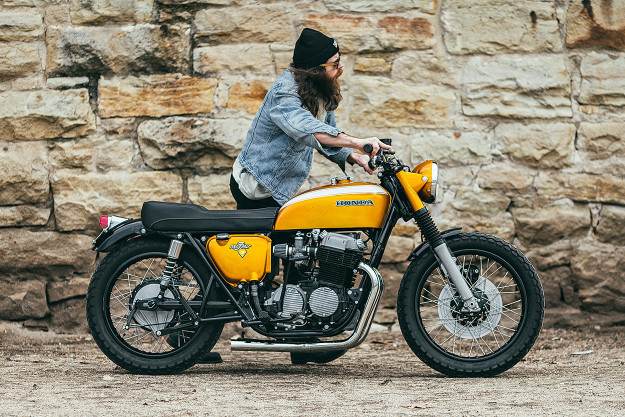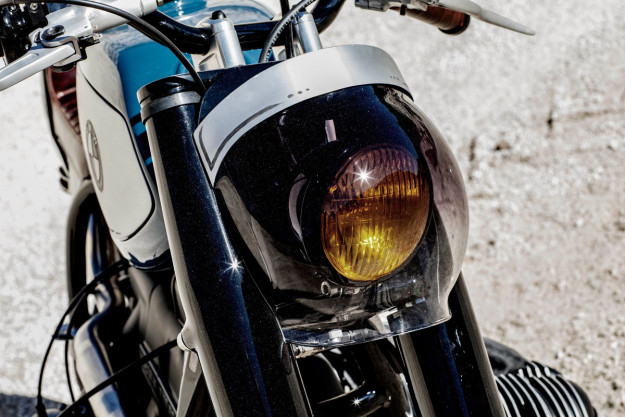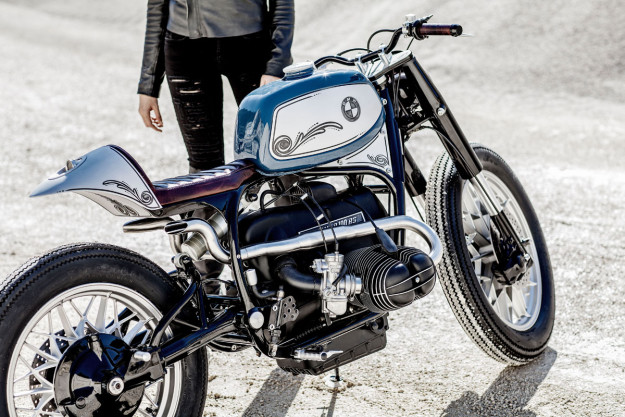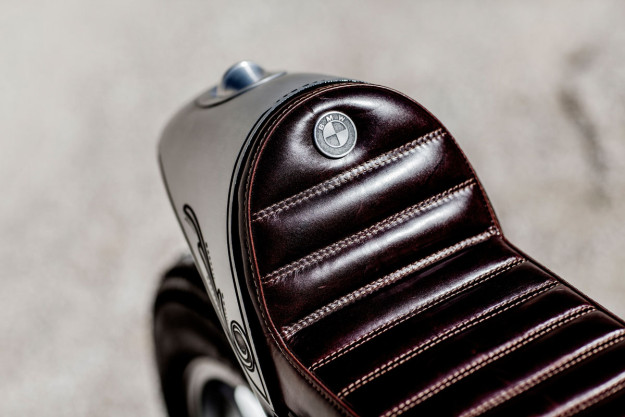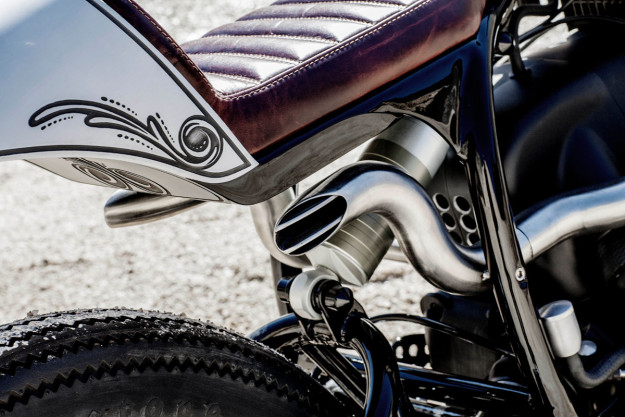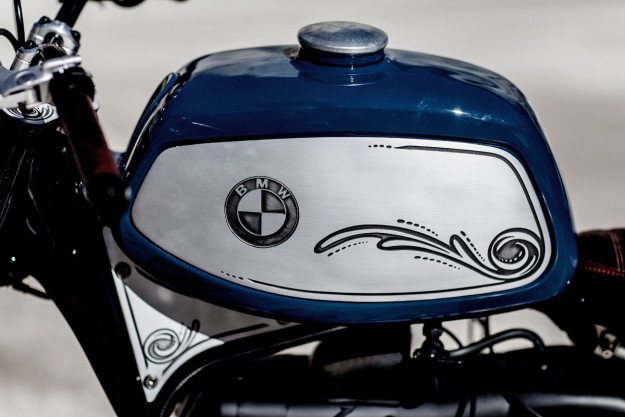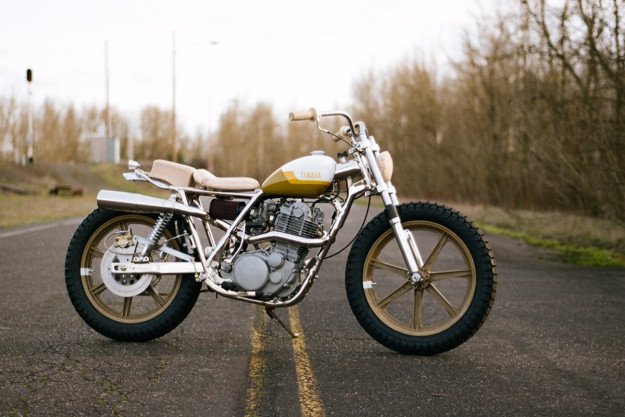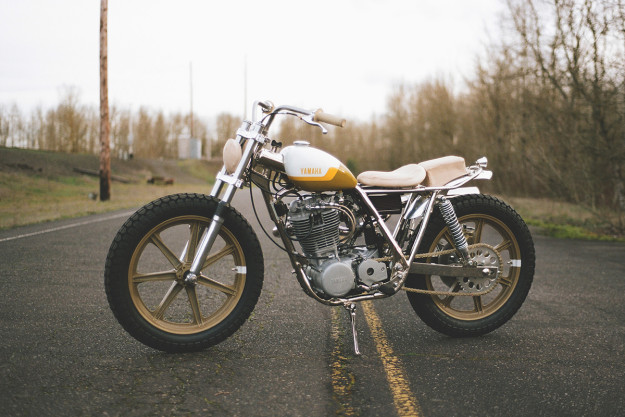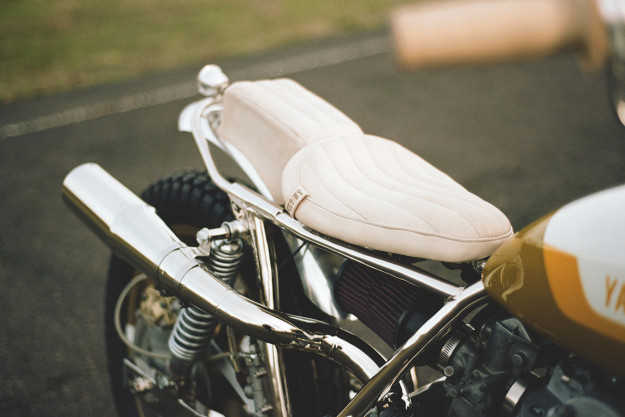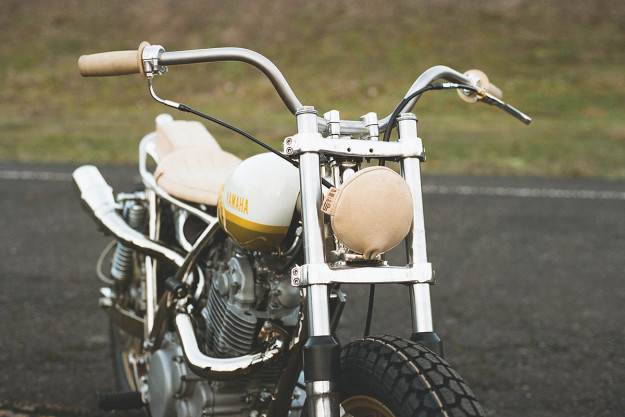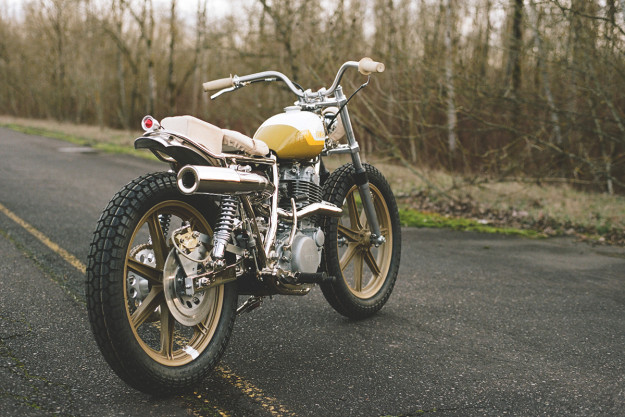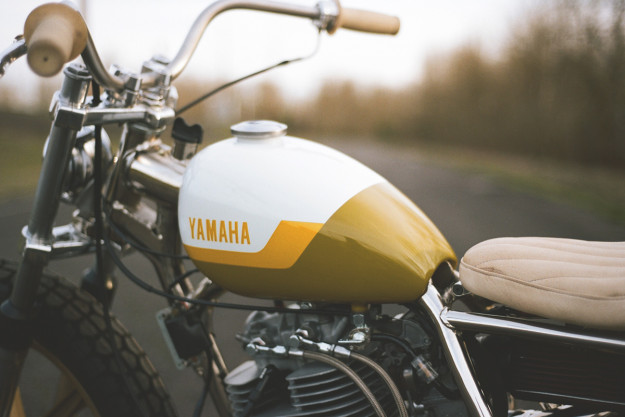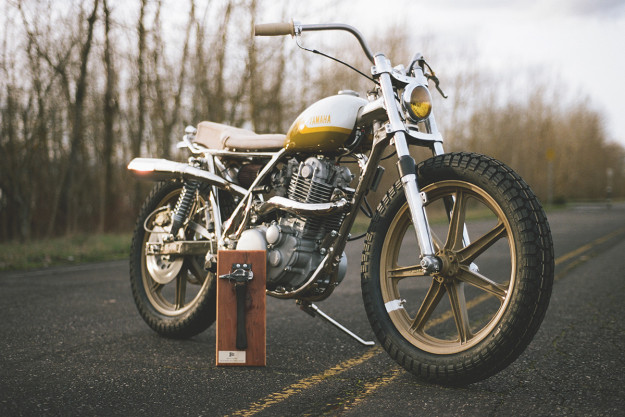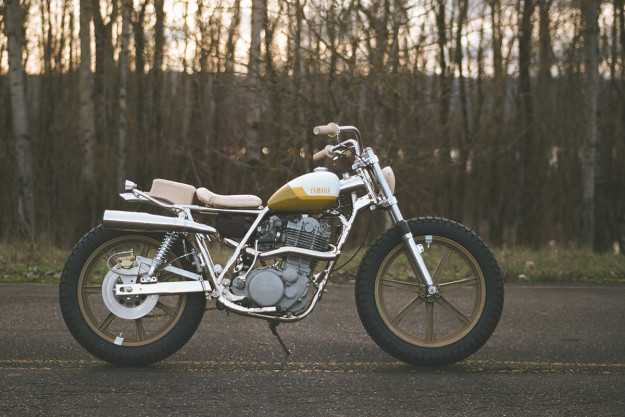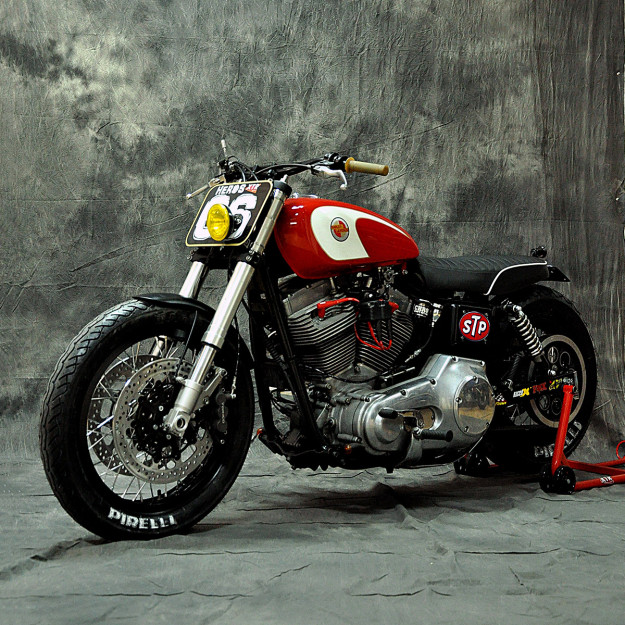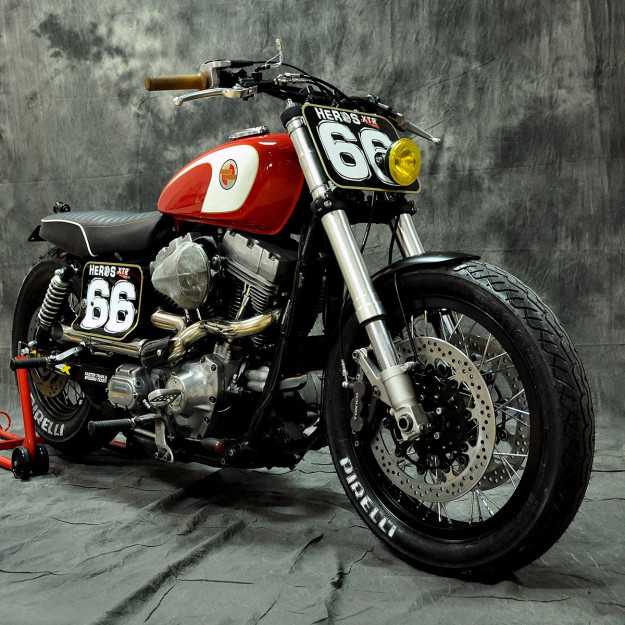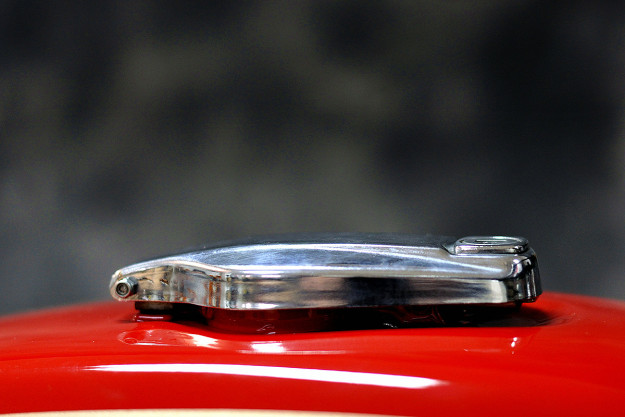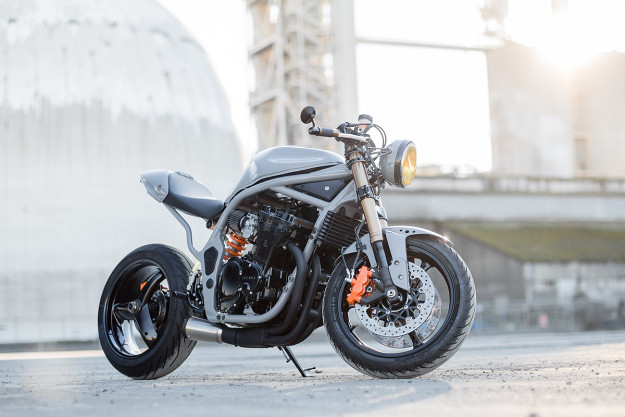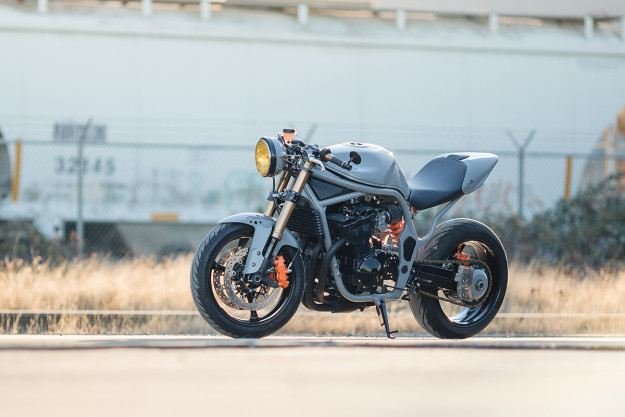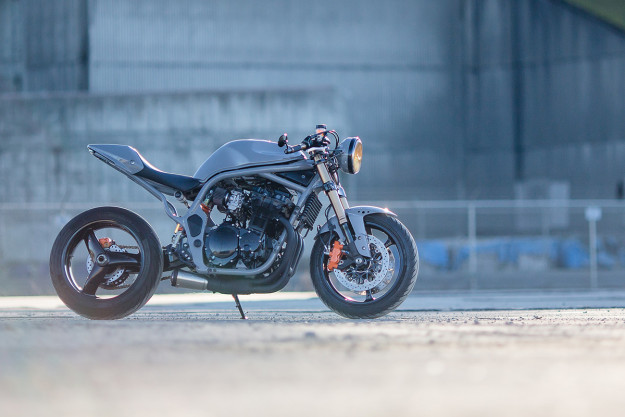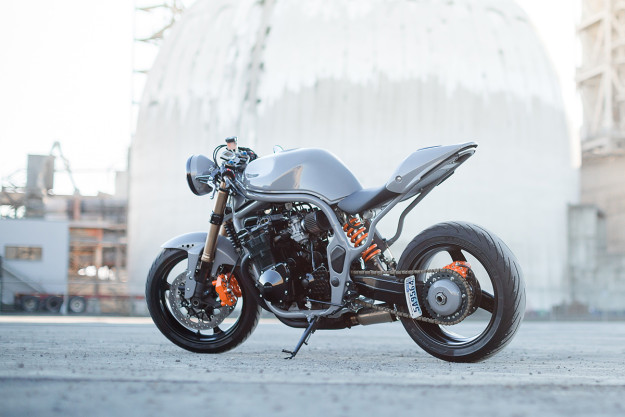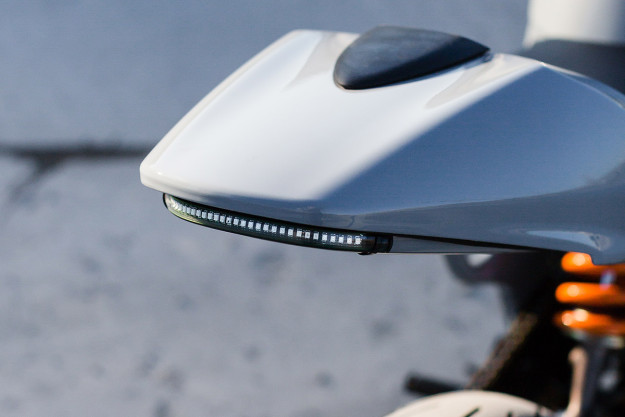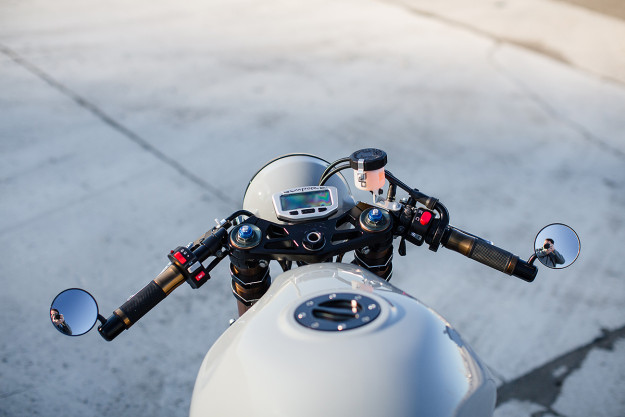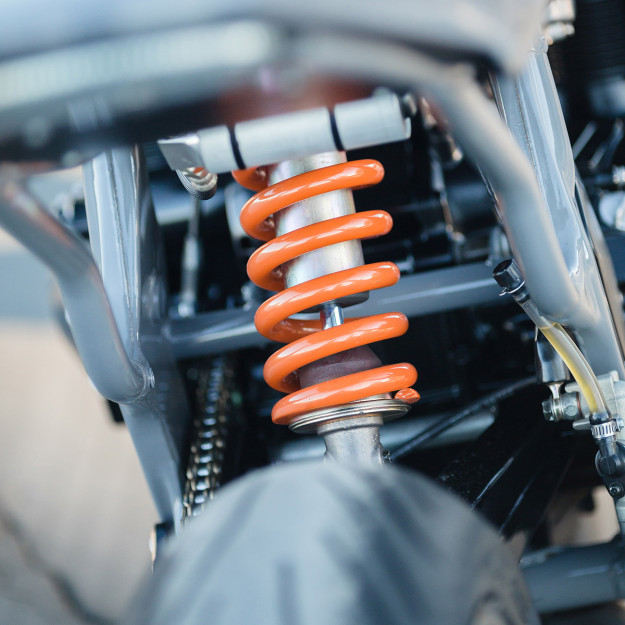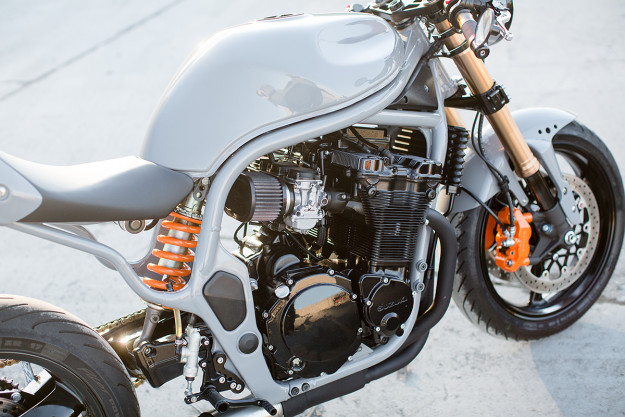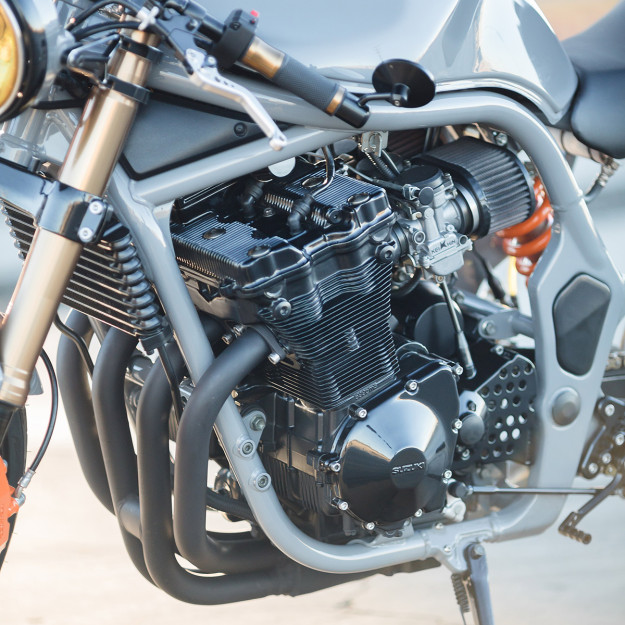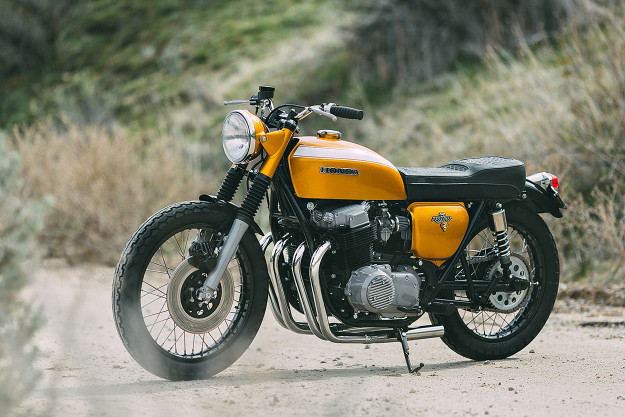
As ostentatious as it is, nothing impresses like gold—whether it’s the 24-carat kind, or the foil covering your favorite block of chocolate. And making an impression is precisely what Brandon Wurtz wanted to do with his first professional build.
After a six-year career honing his skills in high-end automotive restoration, he’s ventured out on his own and opened the Rawhide Cycles workshop in Nampa, Idaho. This is his first solo build: A breathtaking 1971 Honda CB750 called the ‘Golden Goose.’
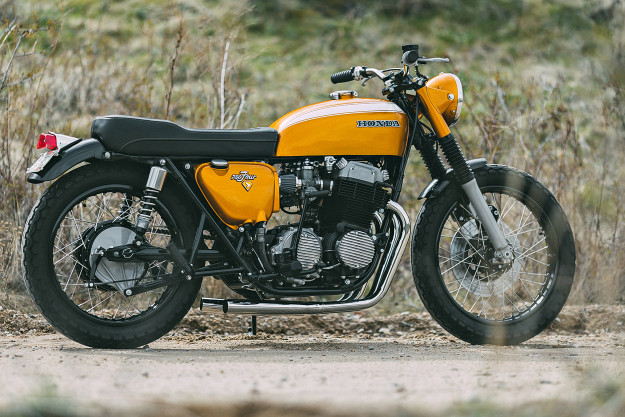
The gold paintwork may be impressive, but a lot more went into the Golden Goose than a few liters of metal flake.
Rather than completely changing Honda’s legendary superbike, Brandon decided to enhance the CB750’s looks and performance by trimming its proportions and lowering its curb weight.
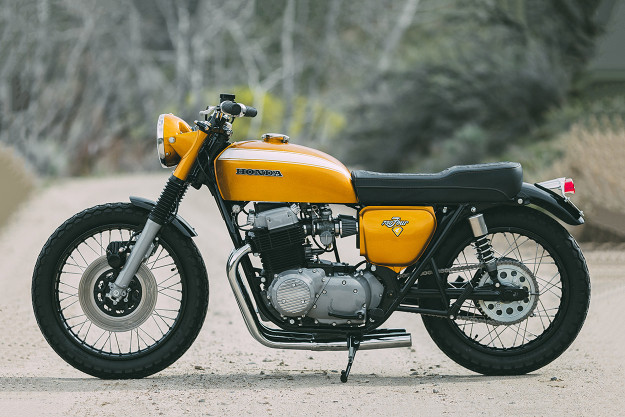
“This is a nod to many of the hot rod muscle cars of the same era,” he explains. “Low, minimalistic and aggressive, with show-class details and paint.”
During the one-month overhaul, Brandon literally left no stone, or shall we say bolt, unturned. Despite the engine having a relatively low mileage, he tore it down for a ground up rebuild.
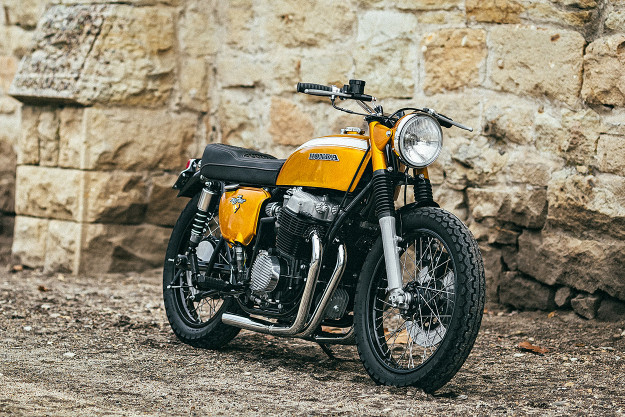
The transmission was overhauled. The cylinders were honed, the valves and seats machined, and the head and block planed perfectly flat. Then Brandon installed fresh rings, a new cam chain, oil seals, gaskets and all new fasteners.
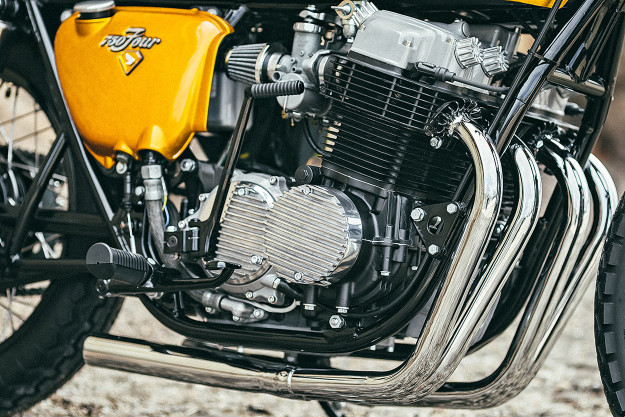
Rebuilding a 45-year-old electrical system is no easy feat, but Brandon has designed and built a simplified wiring harness using Honda’s original color schematic.
For a clean and consistent spark, he’s combined a Charlie’s Place electronic ignition with powerful Dyna coils. A set of Super Hawk switches controls the accessories.
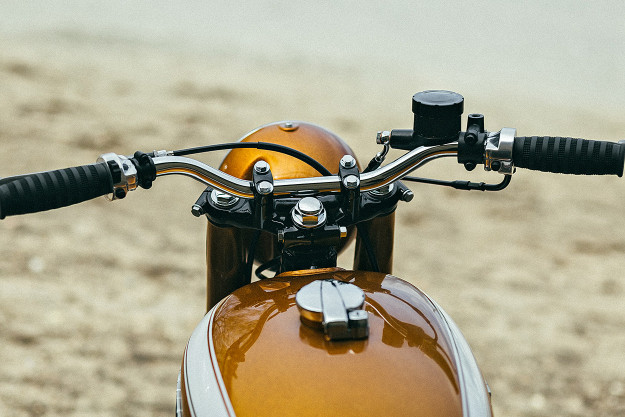
The original CB750 rims and hubs were powder coated black, re-laced with Buchanan’s stainless steel spokes, and wrapped in Dunlop K81 rubber.
‘Forking by Frank’ contributed a set of 1.5-inch lower stanchions, and the rear end was dropped to match—using 290mm Hagon shocks to level out the Honda’s stance.

In the quest for minimalist proportions, Brandon has ditched the overinflated 1970s seat. In its place sits a Rawhide Cycles seat pan—covered in gold to match the paint.
The seat itself is diamond-stitched black leather, and molded to follow the lines of the frame and fuel tank.

To restore the bike back to its original condition, the swing arm, triple clamps, fenders and frame are finished in gloss black powder. The fork lowers, engine covers, carb bowls, and rear brake plate have been bead blasted to a matte finish, and then sealed in a protective clear coat. “It is a 100% custom restoration, down to every nut and bolt,” Brandon says.

Jack ‘Pacman’ McCann handled the paint, laying down Huffer Micro Gold flake under House of Kolor’s Gold Kandy. In the original CB750 style, he’s also added PPG white pinstripes, before applying a thick, glassy coat of PPG clear.

Looking like a million bucks and running like a Swiss watch, Golden Goose was entered into the Boise Roadster Show in Idaho.
Not surprisingly, the CB750 wowed the judges—and took First Place in the Antique Custom class.
Congratulations to Brandon Wurtz for striking gold on his first attempt. We’ll be keeping a very, very close eye on future Rawhide builds.
Rawhide Cycles | Facebook | Instagram | Images by Peter Lovera

